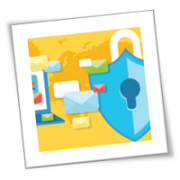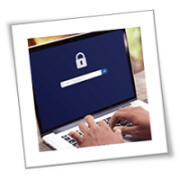Microsoft 365 data security: 7 Ways to boost protection
Microsoft 365 has become an incredibly popular choice for enterprises of all sizes looking for a comprehensive set of tools for staying productive and secure. But as with using any software, it is important to take steps to protect your data. In this article, we will discuss seven ways to boost data protection in Microsoft 365. We will also provide tips on how businesses and employees can stay safe online.
Secure mobile devices
It’s common for employees nowadays to use personal smartphones or computers to access their work email, calendar, contacts, and documents, especially if they’re working remotely. This is why securing employee-owned devices should be a critical part of protecting your organization’s data.
Installing mobile device management features for Microsoft 365 enables you to manage security policies and access permissions/restrictions, and remotely wipe sensitive data from mobile devices if they’re lost or stolen.
Turn on policy alerts
Establish policy notifications in Microsoft’s Purview compliance portal to help you meet your company’s data security obligations. With policy alerts on, your employees will receive tips about sending confidential information anytime they’re about to send messages to contacts outside of the company network. These preemptive warnings can prevent data leaks and also educate users on safer data sharing practices.
Use multifactor authentication
Using only a password to protect your Microsoft 365 accounts could lead to account hijacking, which could put your data at risk of being compromised. Enable multifactor authentication (MFA) so that users will be required to supply additional credentials on top of a password before they can access their accounts.
MFA makes it difficult for hackers to access your accounts since they not only have to guess user passwords, but they also need to provide a second authentication factor like a one-time SMS code or a fingerprint scan.
Avoid public calendar sharing
Microsoft 365’s calendar sharing feature allows employees to share and sync their schedules with their colleagues. However, publicly sharing this information exposes you to security risks because it helps attackers understand how your company works, determine who’s away, and identify vulnerable users. For instance, if security administrators are publicly listed as “Away on vacation,” an attacker may see this as an opportunity to unleash malware on unattended computers.
Apply session timeouts
Many employees usually forget to log out of their Microsoft 365 accounts and keep their computers or mobile devices unlocked. This could give unauthorized users unfettered access to company accounts, allowing them to steal sensitive data.
By applying session timeouts to Microsoft 365 accounts, email accounts, and internal networks, users will be automatically logged out after a period of inactivity. This can prevent hackers from taking over users’ devices and accessing private information.
Employ role-based access controls
Access management is another Microsoft 365 feature that will limit the flow of sensitive data across your organization. It lets you determine which users have access to specific files in your company. For example, rank-and-file employees won’t be able to read or edit executive-level documents, thus minimizing the risk of data leaks.
Encrypt emails
Encrypting classified information is your last line of defense against data breaches. If hackers intercept your emails, encryption tools will make files unreadable to unauthorized recipients. This is a must-have for Microsoft 365, where files and emails are shared on a regular basis.
Partner with us to ensure your organization’s Microsoft 365 accounts are always secure and compliant with changing data security requirements. Call us today and our IT experts will help find the right cybersecurity solutions for you.
If you are looking for an expert to help you find the best solutions for your business talk to GCInfotech about a free technology assessment
Published with consideration from TechAdvisory.org SOURCE












